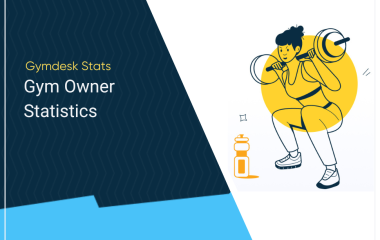His gym is about to close.
A struggling gym shared his story on Reddit and begged for help:
When he started, he saw 18-25 clients weekly and 6-12 on Saturdays.
Then, he started losing customers.
Now, he sees 4-10 clients during the week and 3-7 on weekends. His gym is on life support, and his core members are carrying him.
But he’s losing them too.
“To add insult to injury, some of my cherished core clients, my fitness family, are bidding farewell as their work ships them off to distant lands.”
Could local SEO for gyms be the answer to his problem?
The answer is yes.
What is local SEO again?
Local SEO is street-level marketing that’s designed to attract the locals. It’s increasing your visibility in search engines like Google or *cough* Bing.
The better you rank, the more visibility and traffic your business receives.
Local search is a form of organic search focused on attracting a local audience, relying on keywords with local intent.
What makes local search different?
Well, there’s the local 3-pack (aka the map pack). The local pack appears at the top of Google search results for searches that have local intent.
Why these three gyms?
Google decided these three gyms were the most relevant and prominent results for this particular keyword.
Well, how does Google know this search is local?
- The searcher (me) decided to include a geographically specific keyword (Chicago or 60016).
- Searchers can use phrases like “near me” to indicate local intent.
- Searchers can use fitness gyms without qualifiers to indicate local intent. If I’m looking for a gym and live in Chicago, it doesn’t make sense to show gyms in Toronto.
Here’s another important detail about the local 3-pack. It’s heavily dependent on Google Business Profiles, Reviews, On-Page factors, and links.
What about local organic search results?
You know, the blue links.
These local organic results are much more dependent on on-page factors, links, behavioral signals, and, to a lesser extent, Google Business Profile. What’s the difference between these two local results?
The local pack points to Google Business Profiles, while local organic results point to web pages. Both of these still depend on relevance, value, and strong offers. If you know what your customers want, local search is much easier.
These local SEO ranking factors are a guide
Ranking factors are the criteria Google uses to order the web pages in their index. Google makes subtle changes to these factors over time.
Let’s take a look:
| Local search ranking factors | |
| Google Business Profile (25.12%) | On-Page Signals (13.82%) |
| Link Signals (16.53%) | Social Signals (2.82%) |
| Review Signals (15.44%) | Citation Signals (10.82%) |
| Behavioral Signals (9.56%) | Personalization (5.88%) |
Let’s break a few of these ranking factors down in detail.
Optimize your Google Business Profile
According to a Moz study, 25.12 to 27.94% of your local search rankings (local pack + localized organic rankings) depend on your Google Business Profile.
This means Google Business Profile > Website.
Let’s look at how you can optimize your Google Business Profile and improve your local rankings ASAP. There are two ways you can get started with your Google Business Profile.
- Add your business listing.
- Claim your business listing.
Here’s how you do it.
- Search for your business in Google.
- Look for the “Own this Business?” link in the knowledge panel.
- Can’t find the link? Visit Google.com/Business and click “Manage Now.”
- Enter your business name in the search box. If your business isn’t listed, click the “Add your business” link to start the process.
- You’ll enter your business name, location, and address. Next, Google will ask you to enter the category that best fits your business and contact details you’d like customers to see.
- Finally, you’ll need to verify your business on Google. The verification methods are automatically chosen and typically include phone/text, email, video recording, live video call, mail, or bulk verification (10+ locations). If you’re using Google Search Console, your profile may get instant verification. If you do, make sure that you’re using the same credentials.
Follow the steps in this video to add or claim your business in Google’s listings.
Okay, your Google Business Profile has been verified.
What’s next?
Edit and Optimize your Google Business Profile
It’s time to edit your Google Business Profile! Here’s a 60-second overview from Google showing you how to do just that.
- Click “Edit Profile” in the top left. You should see a pop-up window that looks like this:
- Fill out the about, contact, location, hours, and more sections.
- On your dashboard, Click “Photos.” Add your cover photo, logo, and business photos.
- Click “Edit Products” to add gym merchandise.
- Next, click “Edit Services” to add the services available in your gym.
- If you use a third-party booking service that integrates with Google, you can add that here.
- If you’ve added your business phone number, “Customers who call your business from Google Search will be connected through a forwarding number.” Google discontinued the call history on July 31, 2024.
- Add Q&A questions that you can answer.
Optimize Review Signals
Online reviews make up 15.44% of your local search rankings. Here’s the problem, there are lots of review platforms (e.g., Google, Yelp, Facebook, TripAdvisor, etc.). Where should you focus your attention? Which review platform will give you the biggest bang for your buck?
No surprise, it’s Google.
According to Review Trackers, 73% of online reviews come from Google. “Only four sites are responsible for the distribution of 88% of all reviews. After Google (73%), Yelp (6%), Facebook (3%), and Tripadvisor (3%) follow suit.”
Your Google Business Profile is ground zero.
Here’s how you can optimize reviews via your Google Business Profile.
- Ask each of your customers to write a review (if it’s on Yelp, ask them to find you on Yelp).
- Create review request templates to guide your requests.
- Use review requests to help customers (more on that later).
- Share positive reviews on your web pages, social media, and advertising.
- Use negative reviews to attract reviews from loyalists.
- Use negative reviews to fix problems in your business.
- If you’ve fixed the problem for specific customers, ask them to update their review.
- Respond to each review in a timely fashion.
These are simple strategies you can use to generate a consistent flow of reviews for your gym.
Here’s another problem.
You’re not sure how to ask for reviews, and your customers aren’t sure what to say in their reviews. You need to figure this out ASAP because reviews are conversion boosters.
First, you’ll need to ask your customers for feedback. Here are some templates you can use to request reviews for your gym.
Template #1: The all-purpose request
Hey [Customer name],
I want to thank you for your membership. How’s everything going so far? I’d like to hear about your experience at [gym].
Do you mind taking just a few minutes to share your feedback?
[review funnel link]
Template #2: Did we make you happy?
[Customer name],
I wanted to ask you a question.
Did we make you happy?
Your [30-day anniversary] is coming up, and I wanted to get your feedback. Are we taking good care of you? What do you want us to change?
Share your feedback here: [review funnel link]
Template #3: Did we fix the problem?
Hey [Customer name],
I saw that you had an issue with [problem] yesterday. Was [employee] able to take care of things for you? Did we resolve the problem to your satisfaction?
I’d like to hear about your experience.
Share your feedback here: [review funnel link]
Optimize local link buidling
Coming in at 16.53%, link signals are the second most important ranking factor for local search. Content is the foundation of SEO and link building. Each web page should have unique content that you can use to build links. Here are a few high-percentage tactics to create links to your web pages.
- Add internal links—connecting your web pages.
- Reference locals in your content. Contact the locals and ask them if they’re open to linking.
- Contact relevant local businesses—charities you support, chamber of commerce, suppliers, distributors, networking groups, businesses nearby, schools and universities you support.
- Do cold outreach for link building.
- Use tools like Semrush to search for citation opportunities.
- Use third-party content platforms like (Quora, Medium, SlideShare, etc.) to build links.
Local gym SEO is a subset of organic SEO, so the strategies and tactics that work for one work for the other. Here’s a comprehensive list of link-building strategies and tactics you can use to earn links.
Optimizing On-Page signals
On-page signals make up roughly 13.82% of your local search rankings. The good news is on–page optimization is pretty straightforward. A simple workflow can provide the direction you need.
- Add your NAP citations throughout your website
- Create content for each page.
- Choose a target keyword for each page (I didn’t say choose several).
- Add your target keyword to the URL of your web page.
- Use your keyword in the title tag and meta description portions of your page.
- Use your keyword within the first 50-100 words (verify that your content matches searcher intent).
- Use your keywords in your H1/H2 tags.
- Use keywords in your image titles and alt tags.
- Add five to ten internal links (linking to other web pages) per web page.
- Add external links to valuable content and resources.
- Add synonyms, permutations, and related keywords to your web pages.
- Make sure your website is responsive.
- Optimize your site for Google Page Speed.
- Increase dwell time. Decrease bounce rate.
All set with your on-page optimization? Good, you’re ready for the next step.
Optimizing NAP citation signals
NAP stands for Name, Address, and Phone.
A local citation is any online reference that includes your name, address, and phone number. The more citations you have, the easier it is for Google to understand, display, and rank your business accurately. Share your citations with as many (reputable) sources as possible.
NAP citation signals are 10.82% of your local search rankings. You want your NAP to be consistent across the internet—your Google Business Profile, directories, local listings sites, and your website.
You could do this manually, but I wouldn’t recommend it.
It’s much better to automate the process. You can use tools like WhiteSpark, Semrush, Moz, or Ahrefs to scan for and manage your citations. You want to (a.) verify that your current NAP citations are accurate, (b.) Find all NAP citation data—so you can update incorrect or outdated citations.
This should be done periodically.
You’ll need to find and fix incorrect citations. These fall into two groups—citations you can change (via tools like Bright Local) and citations someone else will have to change manually (via cold outreach emails). As a general rule, local links are best.
Here’s what you need to rank well locally
Content is the cornerstone of great search engine rankings. If you want to be visible in Google’s search results when customers search, you need content that meets their E-E-A-T criteria.
Here’s how they describe it:
- Experience: According to Google, This refers to “content produced by someone who has first-hand, life experience on the topic at hand.” Did you use this product or service? Have you visited this gym or facility?
- Expertise: You know what you’re talking about, and your content proves it. Your content is accurate and has a depth of knowledge that comes with expert-level knowledge.
- Authoritativeness: Your business and content have a good social standing. You publish high-quality content, and other notable people in the industry respect you.
- Trustworthiness: You’re transparent about the who, what, when, where, and how of your business. You share contact and customer service information. You’re ethical, and you maintain a positive reputation.
Here’s the important part about E-E-A-T.
It’s not a ranking factor; it’s a methodology Google uses to see if your content (business) should even be part of the conversation when people search for a gym.
It’s not rocket science.
Improving your gym’s local search rankings is simple and doable; it just takes consistent effort.
What if you rank well but don’t get any new customers?
You invest all this time and effort into local search, and there’s no payoff.
That’s the risk.
If you install Google Search Console, you’ll see your rankings and the keywords that generated visits. If your fitness gym isn’t generating the search visibility you need, you have a ranking problem.
What if it’s the opposite?
What if you have top-five rankings across all your keywords and get the traffic you need but still not generating revenue? You’ll want to take a close look at each of the following:
- Your offers
- Site speed/performance
- Reviews
- Website friction
If you’re getting traffic but visitors only visit one page, you may have a technical problem. If visitors arrive on your landing page but abandon the process partway through, you have a usability problem, or you need to fix the offer.
Take a close look at the specifics of the issue to find the problem. Local SEO for gyms is the key to consistent growth.
It’s street-level online marketing designed to attract locals. It’s a requirement if you want your gym to grow consistently. Customers begin their search for you (or your competitors) in Google. They want you to meet them where they are.
Why is that important?
The failure rate of health and fitness gyms is 81% in year one. Local SEO keeps your gym in front of the locals. With upfront research, consistent content, and steady link-building, you’ll find you can attract and convert all of the locals your gym needs.
 Gym Owner Statistics: The State of Gyms, Member Trends, and Usage Data
Gym Owner Statistics: The State of Gyms, Member Trends, and Usage Data




 EN (English)
EN (English)
 JA (日本語)
JA (日本語)